The Chateau de Cheverny and its Secret Role in an Anti-Nazi Cartoon
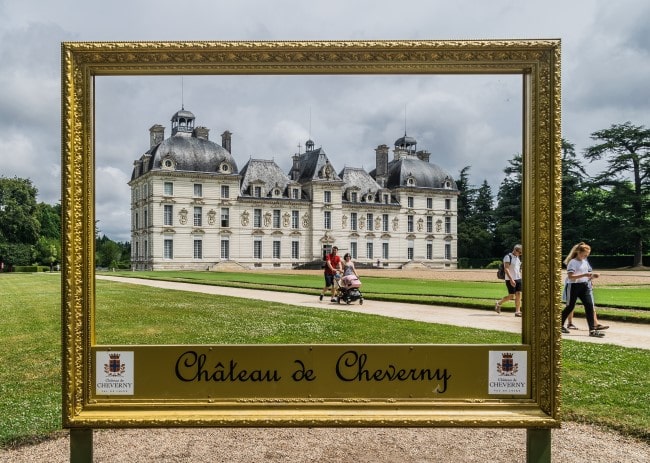

Strolling through the palatial grounds of the Loire Valley’s Chateau de Cheverny, I spot a group of snoozing dogs, languidly lazing in their kennels – or so it seems. I approach, extending my hand in greeting, only for half a dozen of the chateau’s 120-strong gang of hounds to throw themselves with full force against the netting of their enclosure, barking with enough boisterous enthusiasm to wake the dead.
Then my eyes dart to a sign that was previously above my line of vision: “Priere de Ne Pas Exciter Les Chiens.” Perhaps, then, it’s better to let sleeping dogs lie…
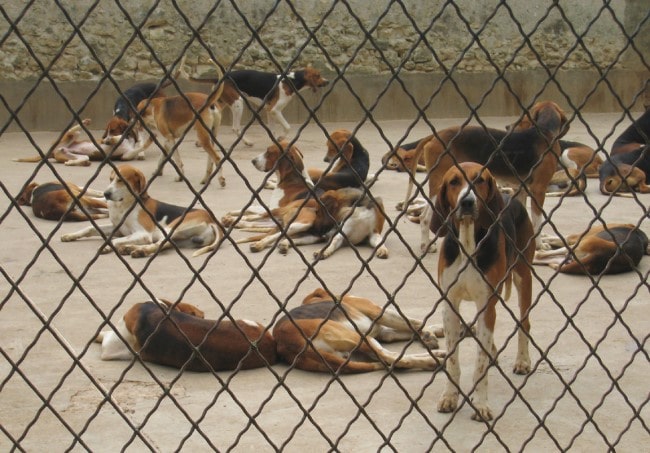
Hounds. (C) CC BY SA 3.0
These magnificent Franglais hunting hounds – a cross between the English foxhound and the French poitevin – have been a main attraction here for years, with the daily feeding spectacle, the Soupe de Chiens, drawing in animal lovers from miles around. When not chasing the dozens of roe deer and hundreds of wild boars on the vast estate, the dogs are helping themselves to piles of the raw chicken carcasses handed out each day, devouring them with ravenous enthusiasm.
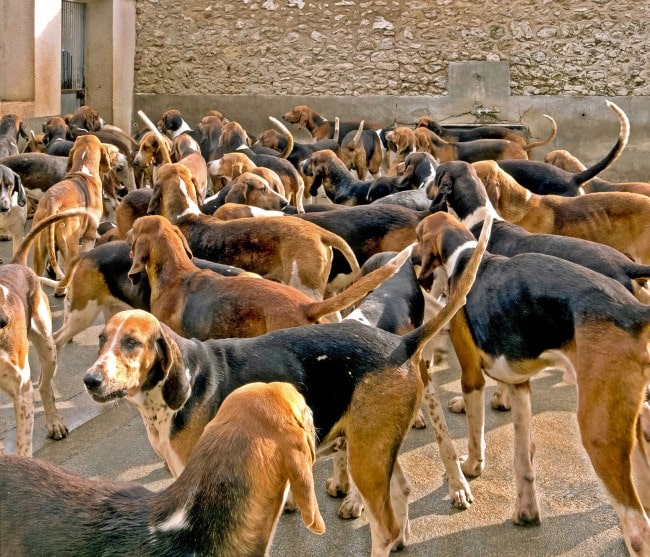
Hounds. (C) CC BY SA 3.0
An encounter with the pack of formidable chiens of the hunt is not for the faint-hearted and yet their keeper has mastered training techniques down to every last detail, even knowing how to prevent one hound from swiping another’s dinner.
There’s more canine mayhem elsewhere at the chateau as part of its permanent exhibition on the Hergé cartoon The Adventures of Tintin. I have barely entered the building before I spot an illustration of the cartoon detective’s lovable little chien blanc, Snowy, toppling a table. Copious amounts of wine pour to the floor and he sends bottles and flustered humans alike flying in the process. Modest in size, yet abundant in quirks, the exhibition is full of fun.
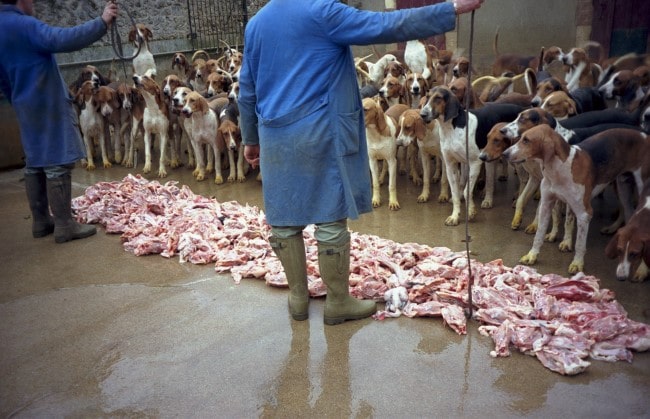
The Feeding of The Hounds at Cheverny by Greg O’Beirne (C) CC BY-SA 3.0
Yet why had a French chateau dedicated an entire building in its grounds to the creations of a Belgian cartoonist? Quite simply, Chateau de Cheverny was Hergé’s muse. By name, Moulinsart – or, in English, Marlinspike Hall – pays homage to the small Belgian village of Sart-Moulin, but visually the grand country home is an intentional, almost exact replica of the chateau. The only difference is that the two outer towers are missing, as Hergé wished not to portray the home’s owners as unrealistically wealthy.

Tintin and his dog Snowy. (C) Wikimedia, Commons
Marlinspike Hall first appeared in the cartoon The Secret of The Unicorn, which was serialised in the French-language newspaper Le Soir in 1942, at the height of the Second World War. Yet at the time of publication, Hergé’s home country – and its media – were under the sinister control of Nazi dictatorship. It is implied that he was obliged to stifle his trademark political content and the satire associated with it to be able to be included in print at all – and diehard fans across Belgium and France were enraged by the suggestion. The cartoonist’s beloved Tintin had originally played a starring role in a children’s supplement of the paper Le Petit Vingtième, but while Hergé was convalescing in France, recovering from painful boils and flu, the Nazis had swooped in and closed it down. Consequently he’d been forced to switch allegiances.
Some argued that he was a Nazi collaborator, complicit by his silent compliance and cooperation with the enemy. They pointed to his willing involvement with Le Soir, which, while under German control, had been reduced to little more than an anti-semitic Nazi propaganda tool. They also highlighted his caricatures of a Jew in another cartoon, The Shooting Star, as additional evidence.
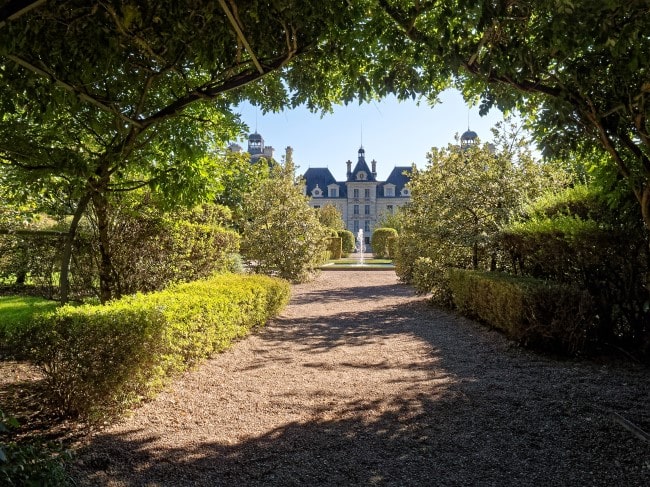
Cheverny-Vue de l’allée menant à l’ Orangerie by Costes Bertrand, (C) CC BY-SA 4.0
Yet in reality, it is likely that Hergé was simply trying his best to earn a living in a country where free speech and free will had been completely crippled by its occupiers’ tyrannical regime. Although it seemed a sickeningly bitter pill to swallow, there was simply no other way for his work to be seen in the war years. Compared to Coco Chanel, who dated an enemy soldier and offered up her services as a spy to survive, Hergé’s actions remained comparatively tame.
And had he really abandoned his cryptic and caustic messages – or were the references still there for those who wished to delve? He had halted his anti-German story The Land of The Black Gold to appease those leading the “mouthpiece of the oppression”, but in The Secret of The Unicorn – one of its replacements – Hergé likely intended to portray a clandestine anti-Nazi message.
The story sees Tintin on the trail of a missing war ship model, the Unicorn, which has been thieved from his apartment. The ship is a replica of a real-life one owned by a 17th century ancestor of pal Captain Haddock, which was seized by pirates who stole its treasures. When lovable canine hooligan Snowy knocks over the replica and breaks its mast, a hidden parchment is revealed inside with a riddle. Two more matching model ships with their own parchments must be found as when the three are combined together, the location of the ancient stolen treasure will be revealed. However criminals are also on the same trail and are willing to go to murderous lengths to recover it.

Chateau Interior Detailing by Zairon, (C) CC BY-SA 4.0
Although Hergé outwardly appeared to have embraced political neutrality, the illegitimate criminal owners of Marlinspike Hall are called the Bird Brothers. They are also implied in the riddle referencing an “eagle’s cross.” Could this be a secret code symbol for the Nazis? An eagle adorned the German coat of arms, leading to soldiers wearing eagle badges on the battlefields, while the Iron Cross is an official symbol of the German military. If there was any further uncertainty, the sequel story, The Red Rackham’s Treasure, resolves it by revealing that Marlinspike Hall’s original owner was a captain in the French Navy. The Bird Brothers, then, were surely symbolic of the wartime actions of enemy Germans, plundering French treasures and claiming stolen land as their own.
And while the story saw poor Tintin held captive in the crypt of Marlinspike Hall for his attempts to recover stolen treasures, Cheverny – the real-life chateau which inspired the fictional one – was successfully stashing secret treasures out of view of the enemy. The Mona Lisa – and various other legendary paintings of the Louvre – were removed and smuggled to the chateau’s orangery in a clandestine operation to save the art of France from German clutches. It was a national secret at the time, but in fact – unbeknown to Hergé – the theme of the cartoon stories he’d set around the chateau was spookily true to real life.
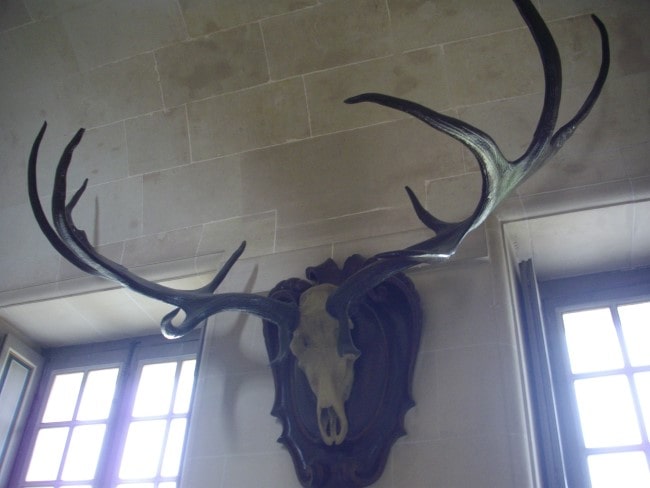
Elk Antlers 6000 Years Old in the Chateau by Fab5669 (C) CC BY-SA 4.0
The Tintin exhibition itself lacks details on this theme, but makes a good outing nonetheless, especially for children. Reconstructed rooms with sound effects evoke the atmosphere in Hergé’s books, from shark-repelling submarines to the experiments of Professor Calculus’s lab and even the crypt where Tintin was imprisoned. Families with young protégé will also love visiting the hounds, a unique feature among the chateaux of the Loire Valley.
The chateau’s interior makes for a fairly short visit but what it lacks in breadth it compensates for in attractions. The building fuses a myriad of ancient and modern décor pieces, from Greek mythology in the King’s Bedroom and murals depicting Don Quixote scenes in the dining room to kitsch Lego model versions of the hunting hounds that live on site. Eagle-eyed visitors might also spot a pair of 6,000+ year old elk antlers from Siberia on the staircase. Meanwhile videos play footage of Queen Elizabeth’s visit to Cheverny from the U.K., where she had dinner with the Marquis.
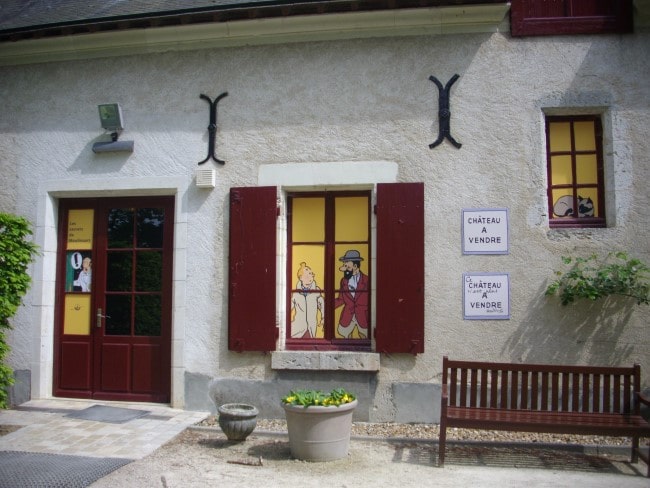
Entrance to the Tintin Exhibition by Fab5669 (C) CC BY-SA 4.0
The chateau once even housed a Lego-style recreation of the most expensive work of art in the world – the 382 million euro Salvator Mundi. More than five centuries old and attributed (at least in part) to Leonardo da Vinci, the depiction of Jesus was part of the chateau’s last exhibition, ‘The Renaissance in Lego Bricks.” The chateau also displayed a miniature Lego version of itself, which used 216,122 bricks and took over 700 hours to build! It seems certain that an equally impressive new exhibition theme will follow post-pandemic.
Although the current marquis owner, Charles-Antoine de Vibraye, might usually be keen to hide himself from prying eyes, he has nonetheless offered visitors an insight into his life by making his wife’s wedding dress public property – find it on display inside. Furthermore, Vibraye’s ancestors were the original owners here. Henri II’s mistress Diane de Poitiers – who had all of the passion but none of the status in her relationship with the King – was unceremoniously ousted from the glitzier Chateau de Chenonceau by his wife Catherine de Medici after he died, and this led to a brief stint living here. She ultimately sold it back to its earlier owners, and the marquis is now happy to share it, along with its colorful history, with the viewing public today.
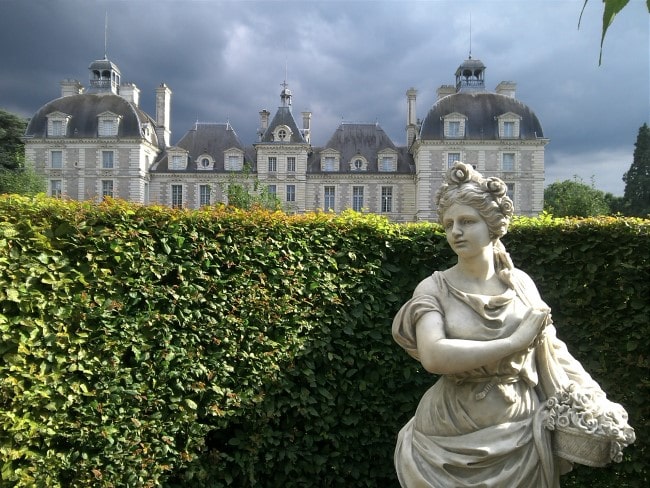
Gardens at Cheverny by Tetiana.Mamula (C) CC BY-SA 3.0
One of the best add-ons to a chateau ticket is the opportunity to join boat trips around the domain, possibly spotting herons and kingfishers along the way. The boats glide past vineyards and take a rest stop in the middle of the forest for those wanting to snap a selfie in front of rows of trees 170 years old. It’s a great way to get an overview of the wildlife and nature on the estate.
Elsewhere outdoors, the orangery – the secret place where exquisite works of art in need of protection were relocated to from the Louvre during the war – makes a great place for a picnic and some reflection on the chateau’s little-discussed past. The Café de l’Orangerie offers local wines from the nearby vineyards, while the Cheverny Wine Club is barely a stone’s throw from the chateau’s entrance gate. For keen chateau hoppers, Cheverny is also within a 10 mile drive of Chateau de Blois – and the lesser known Chateau de Beauregard too.
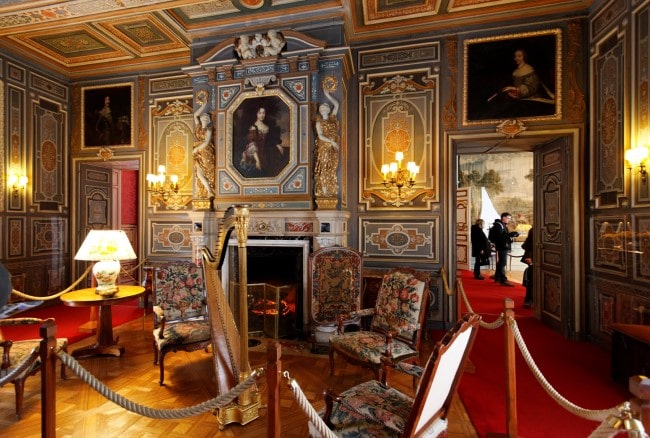
Grand Salon Cherverny by Telemaque MySon (C) CC BY-SA 3.0
If the kids in your group can’t stop enthusing about the hounds – or if you’re a big fan yourself – why not stop by at the Musée de la Chasse et de la Nature when arriving back in Paris? The Salon des Chiens is a great place to see further paintings from the Louvre – note the depictions of pointer dogs on the scent of deer! Although hunting in itself might seem cruel, the illustrations of the lifestyle still make for a compelling portrayal of country pursuits in vintage France.
The chateau is just over two hours by car from central Paris, or a train to Blois followed by a shuttle bus to Cheverny. For those low on time but high on ambition, this program allows two chateaux to be visited in one day. ParisCityVision also regularly hosts a direct shuttle from the city, so it’s easy to arm yourself with a copy of The Secret of the Unicorn while setting off to discover the hidden treasures of one of the Loire Valley’s most fabled domains.
Get all of the details about post-coronavirus opening times from its website at https://www.chateau-cheverny.fr/
Lead photo credit : Chateau Cheverny Exterior by Krzysztof Golik (C) CC BY-SA 4.0
More in cartoon, chateau, history, hounds, tintin, trip




REPLY